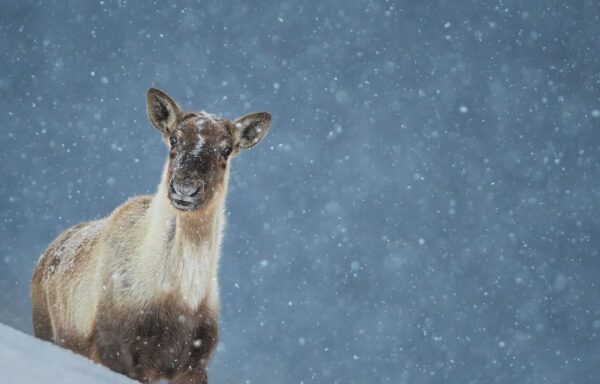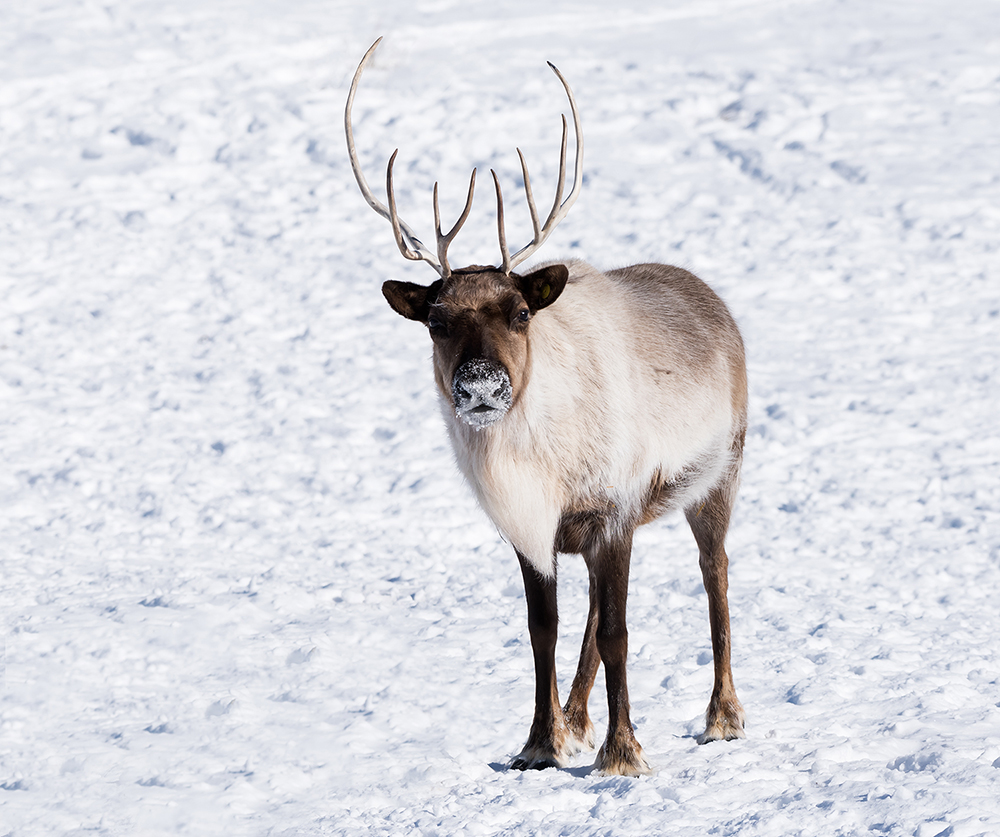THE CARIBOU OF VAL-D’OR
The Val-d’Or caribou are one of two isolated populations of woodland caribou in Quebec. The other is the one in Charlevoix. These two populations were gradually isolated as the southern limit of the woodland caribou’s range moved northward.
The first assessment of the Val-d’Or caribou population dates back to 1955. At that time, it was estimated at about 80 individuals. Then, this caribou population was estimated at 60 to 80 individuals in 1974, about 50 from 1980 to 1999, 25 to 30 in 2003, and at least 18 individuals according to the last official inventory in 2016. In short, since at least the 1970s, the Val-d’Or caribou population has been in constant decline, with some cyclical variation.
Since 1989, a forest management plan has been in place in the Val-d’Or caribou range. This plan has been updated several times and the most recent version covered the years 2013 to 2018. Also, in 2003, a protected area covering the core habitat of these caribou was created. To this day, the rate of disturbance in Val-d’Or caribou habitat remains too high to hope for their recovery and maintenance.
WOODLAND CARIBOU
The woodland caribou is one of the three ecotypes of woodland caribou found in Quebec. The other two ecotypes are the toundra et mountain caribou. Each ecotype has distinct genetic characteristics that allow it to be adapted to its environment. The woodland caribou, as its name indicates, occupies forest territories in the bioclimatic domains of lichen spruce and moss spruce. It is essentially looking for mature forest with little disturbance.
In Quebec, the woodland caribou is designated as a vulnerable species. It is also designated as threatened under the Canadian Species at Risk Act.
According to Quebec’s Ministère des Forêts de la Faune et des Parcs (MFFP), “recent aerial inventories have shown the precarious state of all populations. In 2012, it was estimated that between 5,980 and 8,570 woodland caribou were distributed throughout their range in Québec”.
TUNDRA CARIBOU
In Quebec, migratory caribou occupy Northern Quebec and are divided into two large herds: the George River herd and the Leaf River herd. A particularity of the migratory caribou is that it makes large migrations (more than 2000 km) every year.
Concerning the George River caribou herd, it has been in decline for 25 years.
In 2018, this caribou herd was estimated at 5500 individuals.
This is a 99% decline compared to the population peak of 1993.
As for the Leaf River herd, it has been in decline for the last 15 years. It was estimated at 600,000 individuals in the early 2000s and about 209,000 in November 2017. The cause of the decline of migratory caribou in Québec is not yet clearly identified.
MOUNTAIN CARIBOU
Mountain caribou frequent the mountain peaks for part of the year and their slopes for the rest of the year. There are two populations in Quebec: the Mont Torngat and Gaspésie populations. According to the Ministère des Forêts, de la Faune et des Parcs, in the early 1950s, the Gaspésie caribou population numbered between 700 and 1,500 individuals. During the 1980s, it was about 250 animals. In October 2018, at the time of the last inventory, the population was estimated at about 70 caribou. In Quebec, it is considered threatened, since 2009, under the Loi sur les espèces menacées ou vulnérables (Act Respecting Threatened or Vulnerable Species). Logging, which causes habitat loss and alteration, is identified as the cause of the decline of these caribou.




